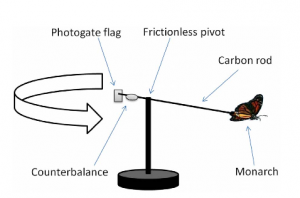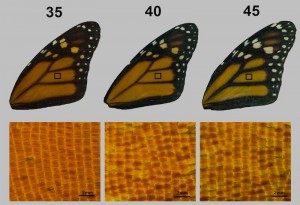I have been sighting more monarch butterflies (Danaus plexippus) recently due to season transitioning from summer to fall. The butterflies begin their famous southward from the United States and southern Canada towards the warmer climates of Mexico and coastal California, passing through Houston.
These butterflies go through four stages in one life cycle and through four generations in a single year. Their life cycle involves the stages of the egg, the larvae (caterpillar), the pupa (chrysalis), and the adult (butterfly). The initial generation is a result of the final generation of hibernating monarch butterflies mating and migrating to the north and east to lay eggs. This represents both the first stage in the life cycle and the first generation of the year. These generations of butterflies, as well as the next two, are expected to live for two to six weeks after adult butterfly maturation. The fourth and final generation of the year varies from the initial three because this generation of butterflies do not die two to six weeks after maturation, instead, these adults migrate south and live up to eight months.
It really is amazing to see how all these different biological processes, and environmental factors play a role in Mother Nature’s course. These butterflies have an instinctive nature of migrating south and north even if their generation of adults has never been there before. This migration process is sophisticated for such a small organism. However, is it possible to quantify, or predict migrating capabilities?
The Odum School of Ecology at the University of Georgia has investigated the possible relationship between wing color and flight performance in captive-reared monarchs. Past work has shown that fall migratory monarchs expressed a darker shade of orange relative to non-migratory summer cohorts. It was on this basis that there was an assumption of wing color and flight capabilities being coordinated. A tethered flight mill apparatus was used to quantify captive-reared butterfly flight duration, speed, and distance. Over 90% if the individuals initiated flight after being released, and those that did not, were not included in the data.
Researchers found a strong correlation between wing hue and flight capabilities. There was a negative relationship between flight distance and orange hue of the wings. The individuals with lower hue values (meaning redder wings) traveled farther on the flight mill apparatus within each sex.
The results are consistent with the previously performed study revealing wild migratory monarchs having redder wing colors than those of no-migratory individuals captured in the summer. Both results suggest that the traits that influence flight could be linked with the pigmentation of the wing scales during metamorphosis. While this evidence does not necessarily prove the theory and flight capability may be attributed to other factors, this study represents an important starting investigation of the involved factors between insect movement and aesthetic attributes. This is an important area of study. If we want to future conserve our butterfly conservation, we must learn about them first.
http://ehis.ebscohost.com.ezproxy.rice.edu/eds/pdfviewer/pdfviewer?sid=e16bfe20-67f0-4ef3-b303-64a8ccbf9ff0%40sessionmgr111&vid=2&hid=107
http://www.sciencedaily.com/releases/2012/07/120725220331.htm
http://www.butterfliesandmoths.org/species/Danaus-plexippus


